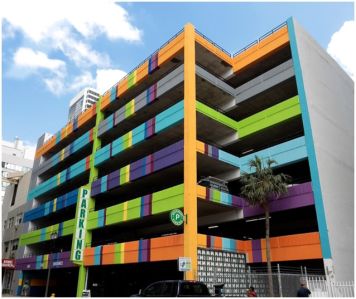The Mortgage Observer spoke to Savills Executive Managing Director Jeffrey Baker this month. Mr. Baker, early to securitization work, talked about the future of this market and his focus at the company.
The Mortgage Observer: How did you get your start in the industry?
Jeff Baker: I have an MBA from Wharton and came to New York in ’86 and worked for Eastdil for a number of years and was a partner there and subsequently moved on in the mid ’90s.
From Eastdil did you go directly to Savills?

No, at the time we were part-owned by Nomura Securities. Nomura owned a 50 percent interest in Eastdil, and at the bottom of the terrible ’90s market I moved directly in to Nomura and stayed there for a while and did some of the early securitization work. We had done the precursor to that at Eastdil. We had done a number of highly structured convertible mortgage and other financings back in the Eastdil days, and then we continued that business at Nomura. Ultimately, Jeff Cooper and I, who were partners there, went to Cushman & Wakefield (CWK) and stayed there for a number of years. Ultimately we joined back up with our ex partners from Eastdil at Granite.
What do you think of the securitization market these days?
I’ve been involved in the market since pretty much the beginning, so when I went to Nomura in ’94 it was in its infancy. We went from a tiny market volume to something like a $250 billion-a-year type origination. Obviously, when the markets collapsed, the securitization market was pretty badly hit, and it has just taken a long time for it to effectively be rebuilt because there just wasn’t confidence in the capital markets for the product that they were creating. And the fact that the rating agencies have issued ratings that didn’t hold up—all that didn’t help. It’s a slow rebuilding that’s going on and I have absolutely no doubt that it will rebuild to a very major component of the capital markets again. It’s just inevitable.
Do you think there are going to be any major differences in the way that it rebuilds?
Yeah, I think that in the later days of securitization—before the collapse, obviously— underwriting got very aggressive, and the competition for deals was so great that a lot of structural changes were made in deal format that ultimately led to many of those deals being deeply underwater and unsuccessful. I think that what the industry has been struggling with is how to create a real third-party evaluation of those positions to make sure that investors who are not that sophisticated in the sector are actually getting what they think they’re getting. And I believe that having some level of accountability, whether it’s some portion of securitization being held by the originator, etc., will more than likely be required going forward long term.
Savills tends to provide such a wide range of services. What do you spend most of your time working on?
These days I’m spending quite a bit of time focusing on the multifamily sector because it’s obviously been a very active sector and it in many respects has the strongest fundamentals of all the property types. We’ve done quite a bit of development capitalization in the multifamily sector, and we’ve also done quite a bit of recapitalization of deals that were overleveraged during the bull part of the market and that just had to be reworked. Then we do a lot of asset distributions as well, so it is a broad range, but generally speaking, we get involved in larger, more complex situations—whether it’s a recapitalization of a large portfolio or it’s a capital raise for new acquisitions. Within the past 12 months we’ve completed transactions of over 8,000 apartment units across the U.S., and that’s included a $300 million capital raise for a large U.S. multifamily owner-operator for new acquisitions and development at one end of the spectrum, and it’s included selling small REO properties for offshore banks at the other end of the spectrum.
Any recent New York-area deals?
Absolutely. We’re in the process right now of capitalizing around a $400 million apartment and retail mixed-use development just across the Hudson River in Fort Lee, New Jersey, at the base of the George Washington Bridge. We’re also selling a property in Hoboken right now and selling a portfolio of apartments in Manhattan. We’ve also recently disposed of several assets that were effectively foreclosed assets by banks that were failed—one was a failed condominium project, which is just restarting now.
Any transaction that was particularly difficult or challenging?
I would say that many that we work on are in fact quite challenging and complicated. An interesting one that we just did last year involved around 5,000 apartment units in the Midwest, which had been acquired and renovated at the peak of the market. Asset values had plummeted. The ownership group was relatively inexperienced in the sector, they were really stuck, and there was a major litigation going on between their lenders and the group. We came in and effectively acted as the advisor for the borrower group and a new capital source that was coming in to recapitalize them. We effectively raised the capital to restructure the whole portfolio. We negotiated a loan modification and new financing for the portfolio and worked out that whole process, and ultimately those assets have now largely been reworked, and they’ve gone from 70 percent occupancy up to 90 percent occupancy.
cgaines@observer.com


